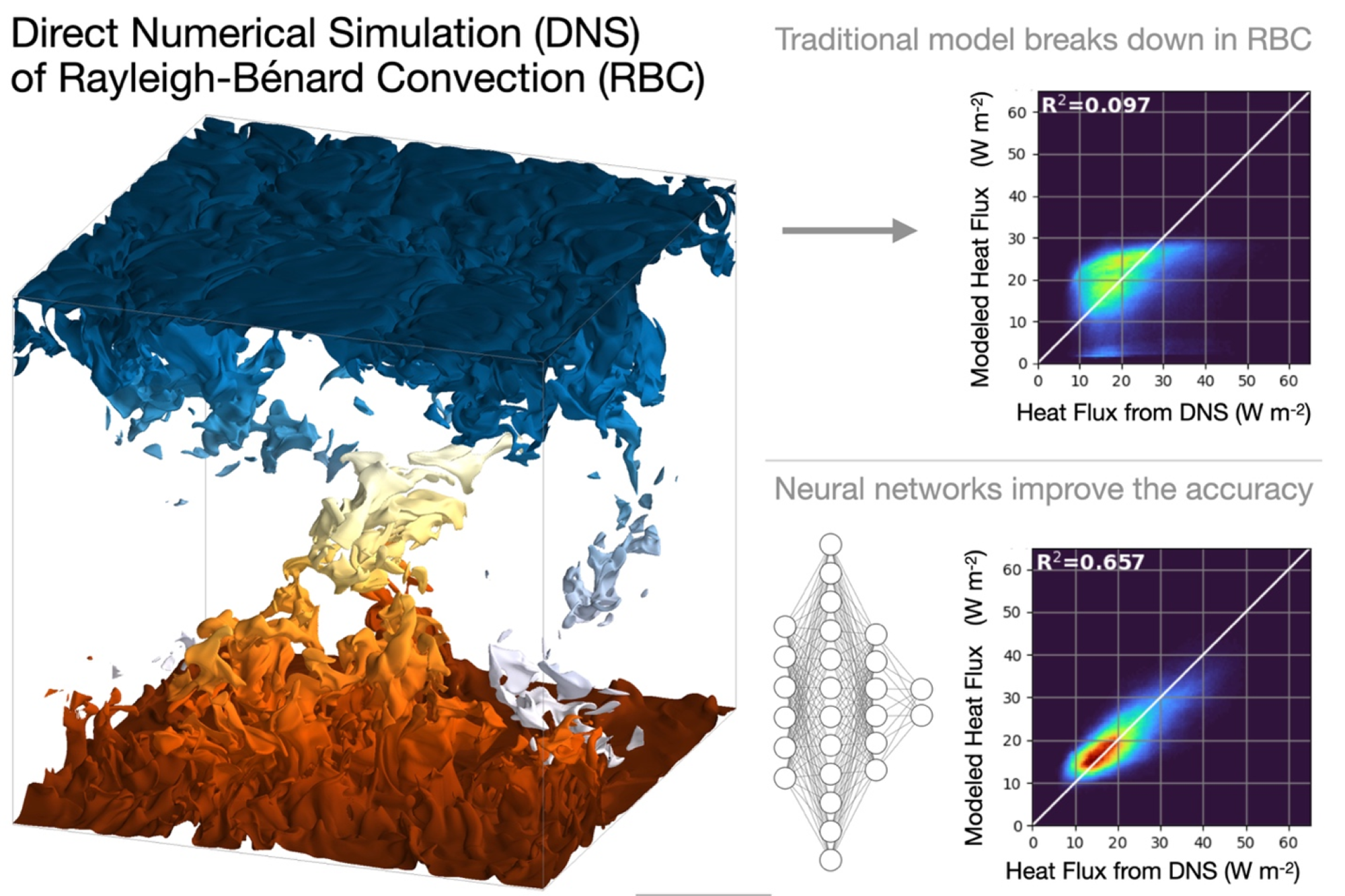Interpretable and Physics-Aware Neural Networks Improve Modeling of Turbulence Near the Surface
Neural networks reveal overlooked flow quantities for improved surface flux modeling and provide robust performance with a physics-aware approach

New research uses direct numerical simulations to investigate how traditional models of near-surface air turbulence perform for coarser simulations and to develop a better model based on neural networks.
(Photo by Andy Wang | Unsplash)
The Science
Turbulence near the Earth’s surface effectively transports momentum, heat, and moisture into the atmosphere. However, a universal model to accurately represent these turbulent fluxes in various flows does not exist. When the turbulence is driven by a vertical temperature gradient and thermal convection, as in the Rayleigh-Bénard convection, traditional turbulence models fail to capture the surface fluxes accurately. To understand the underlying physics and develop a better model, high-resolution simulation data are used to train neural networks and interpret contributions of various input variables. The trained model highlights important flow quantities that traditional models overlook. Additionally, the physics-aware approach allows the model to perform well even when applied to conditions outside the training range.
The Impact
To the best of the authors’ knowledge, this study is the first to develop a near-surface turbulence model for thermal convection using interpretable and physics-aware neural networks. The trained models offer researchers more accurate predictions of momentum and heat flux. Rather than being a mere black box, the interpretable machine learning approach provides insight into the limitations of traditional models. Additionally, the physics-aware approach expands the usability of the trained model beyond the scenarios in which the neural networks were trained, thus aiding the development of numerical simulations and broadening their applications.
Summary
The traditional approach of using the Monin-Obukhov similarity theory to model near-surface processes in large-eddy simulations (LESs) can lead to significant errors in thermal convection. This study proposes an alternative approach based on feedforward neural networks trained on output from direct numerical simulation (DNS), where the resolution is high enough to resolve turbulent motion of all scales. The offline tests compare the momentum and heat fluxes computed from filtered DNS input variables to the “true” filtered DNS fluxes. Additionally, the importance of various input features is investigated using the Shapley additive explanations value. In the online tests, the trained models are implemented into LESs to compare the LES-generated momentum and heat fluxes with those in the DNS.

The findings reveal that vertical velocity, a traditionally overlooked flow quantity, is one of the most important input features for determining local surface fluxes. Increasing the number of input features improves the offline test results but does not always improve the model performance in the online tests because of the differences in input variables between the LES and DNS. Lastly, the physics-aware feedforward neural network models trained with logarithmic and scaled parameters can extrapolate well to more intense convection scenarios than in the training dataset, whereas those trained with primitive flow quantities cannot.
Funding
Funding for this work was provided by the Department of Energy, Office of Science, Biological and Environmental Research program as part of the Atmospheric System Research program. Computing resources were provided by the National Energy Research Scientific Computing Center, a Department of Energy, Office of Science user facility.
Contact
Mikhail Ovchinnikov, Pacific Northwest National Laboratory, mikhail.ovchinnikov@pnnl.gov
Aaron Wang, Pacific Northwest National Laboratory, aaron.wang@pnnl.gov
Published: March 4, 2024
Wang A., X. I. A. Yang, and M. Ovchinnikov. 2024. "An Investigation of LES Wall Modeling for Rayleigh-Benard Convection via Interpretable and Physics-Aware Feedforward Neural Networks with DNS." Journal of Atmospheric Sciences. [DOI: 10.1175/JAS-D-23-0094.1]